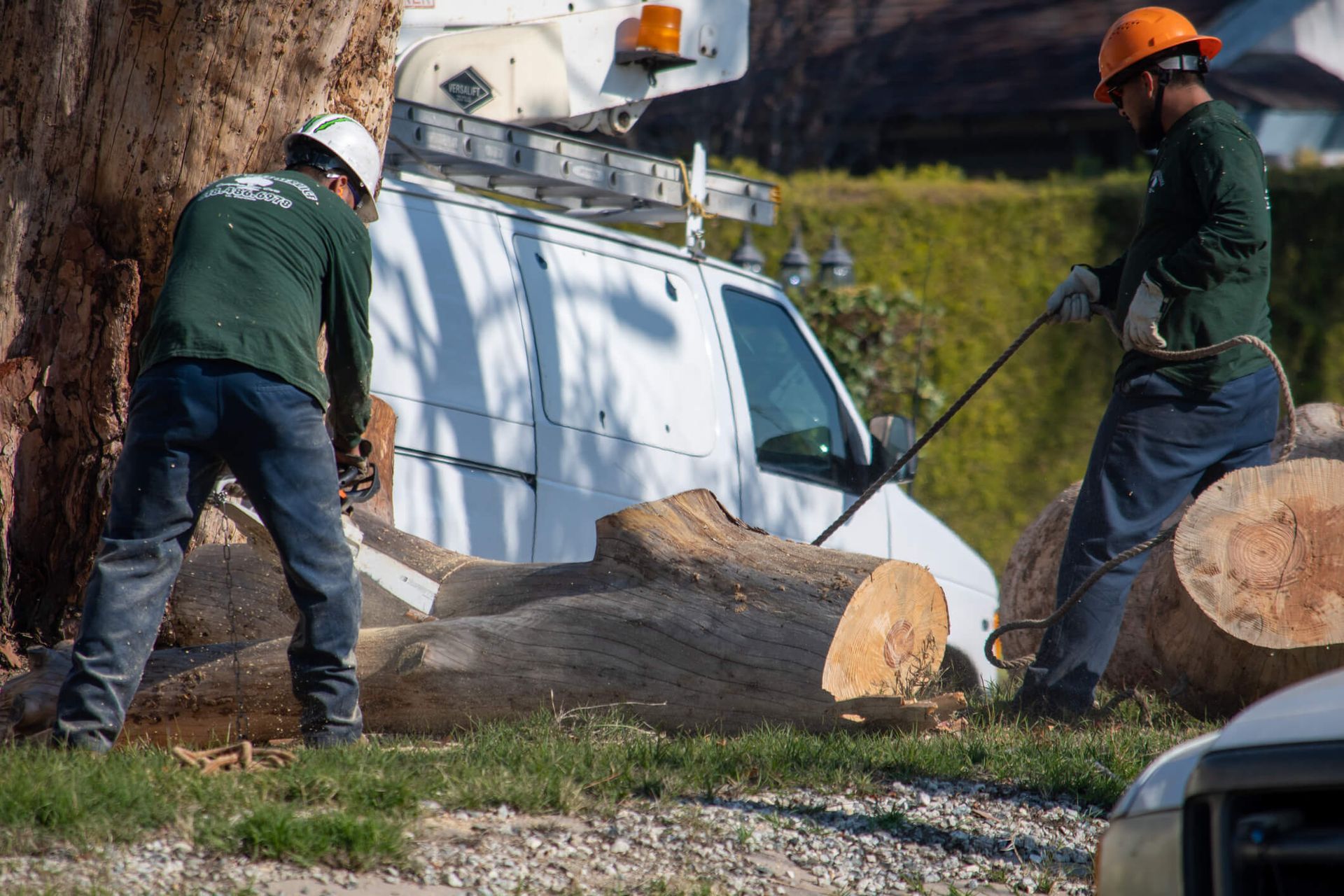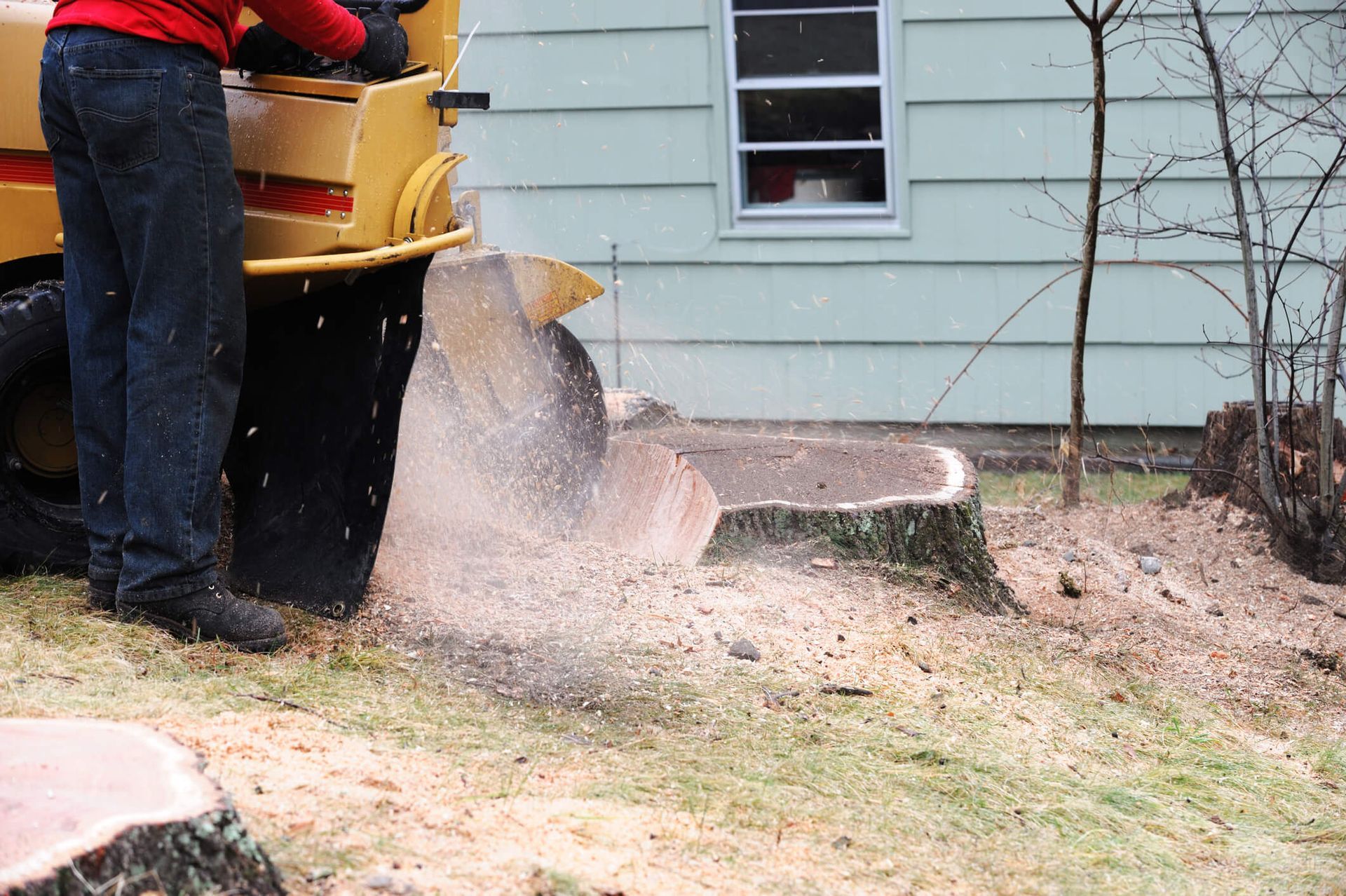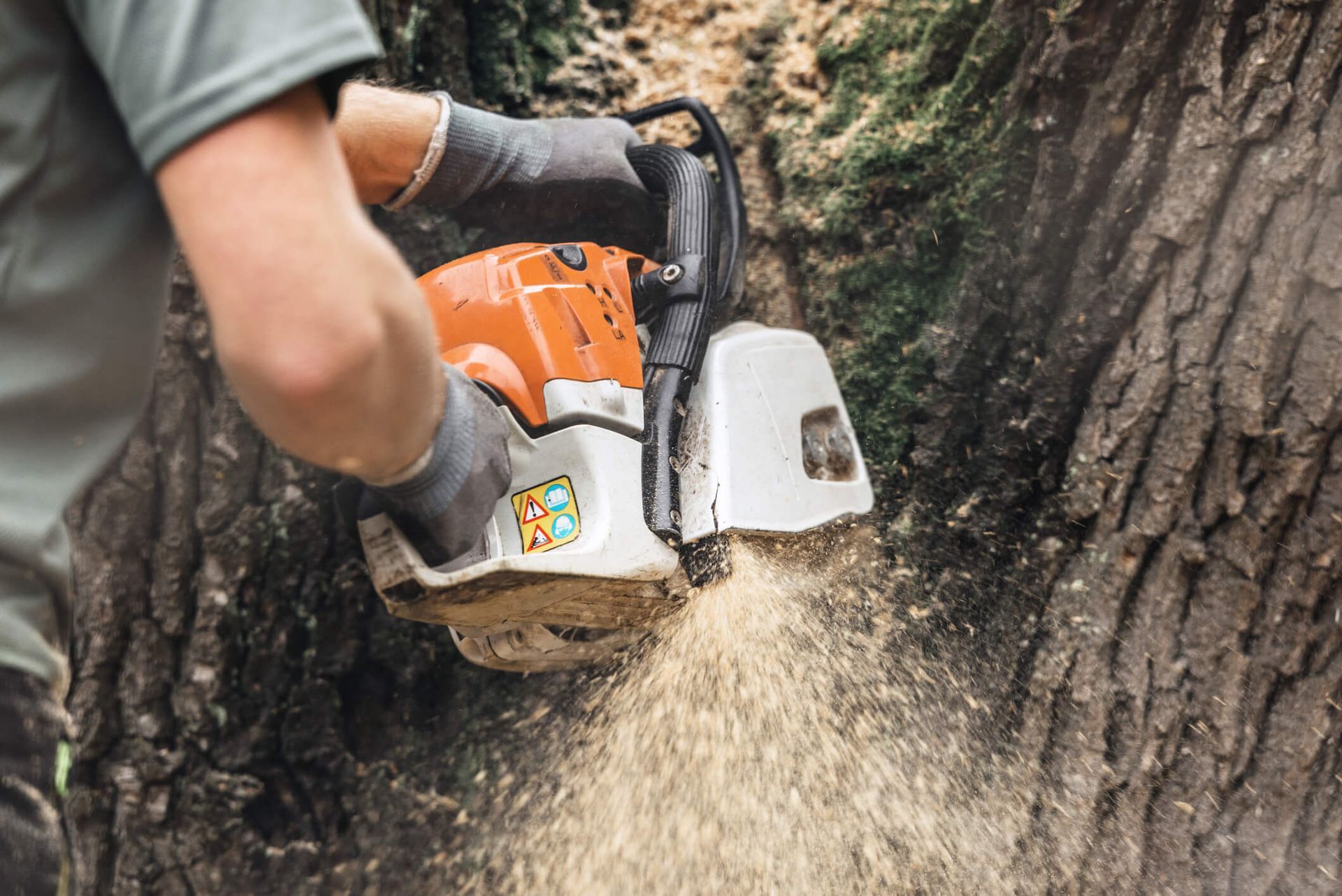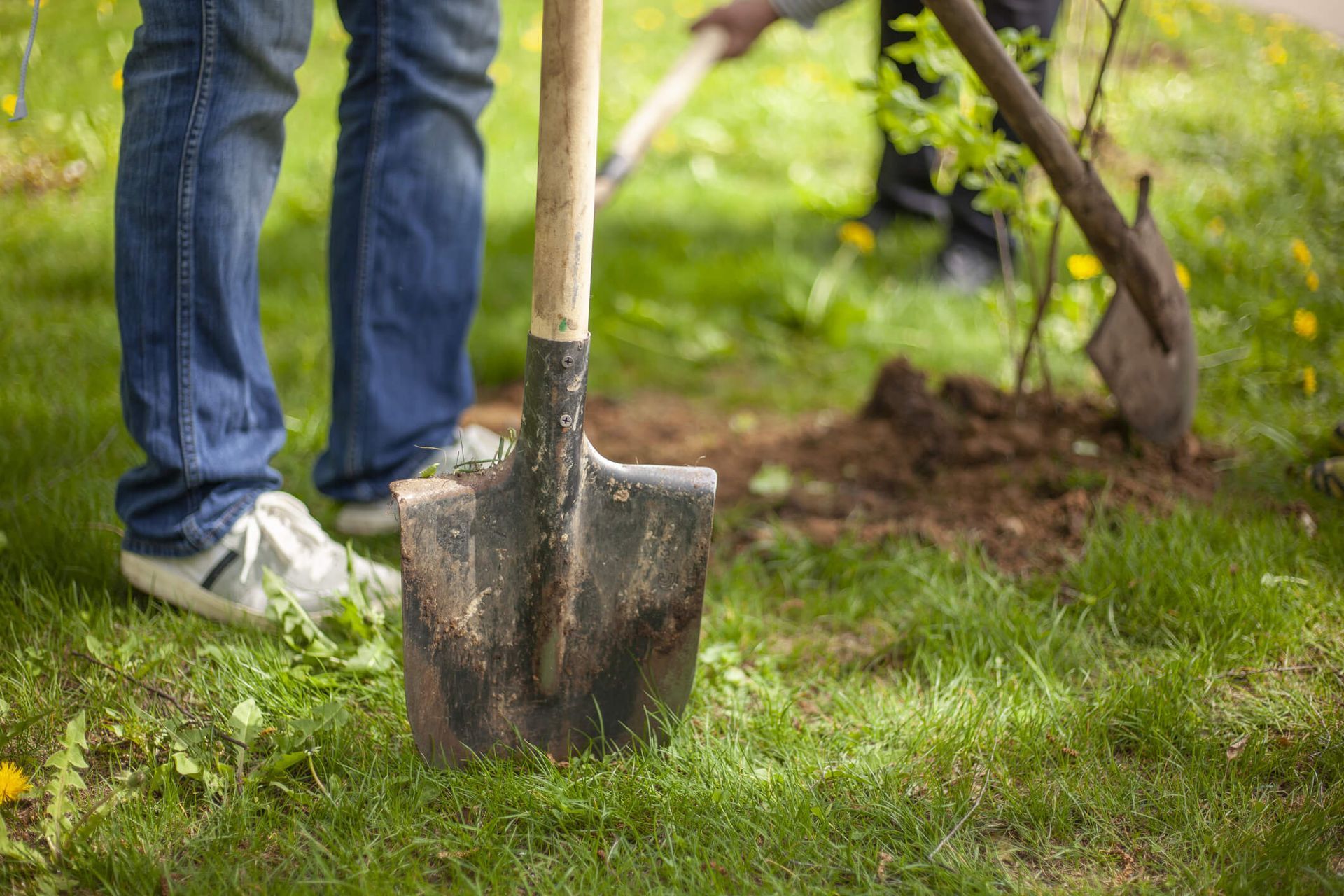How to Grow Grass After Tree Removal
Check out this article from SYS Enterprises if you've been questioning how to plant grass after tree removal.
Have any trees on your property lately been cut down? Do you need help with what to do with the space? Grass planting is a common choice. Reclaiming that space and improving your property's appearance can be done with grass.
This article will explain how to plant grass after tree removal and why it's a popular choice among homeowners.
Have any trees recently been lost or removed? What Happens Next?
Most of the time, we opt not to cut down trees. In most landscapes, trees are a key source of summertime shade. However, you might be forced to take down this precious natural resource if a tree close to your home has fallen, is beginning to die from old age or disease, or has grown over electricity lines.
The removal of trees from a property is tragic. It takes some getting accustomed to having a yard without any trees. However, you sometimes have no choice but to cut down the tree.
In this case, the best action is to seek a tree service's assistance handling the freshly exposed lawn. SYS Enterprises can give you options for dealing with an area left open after removing a tree.
How to Grow Grass After Tree Removal
Planting grass after tree removal requires careful preparation and attention to ensure successful growth. Here are steps homeowners may take to plant grass after stump grinding.
Gather up your tools
Make sure you have every tool you need before starting the operation of reseeding the lawn. These consist of:
- A rake
- A shovel
- A Saw or Loppers
- Compost
- Topsoil
- Slow-release and quick-release nitrogen-rich fertilizers
- Grass seed
Prepare the Area
Preparing the soil before starting to plant your fresh grass is crucial. Your top priority should be getting rid of all sawdust and wood chips. The soil is depleted of nitrogen, a necessary component for producing good grass, by sawdust and woodchips.
Remove any sawdust and wood chips with a rake. Use your loppers and saw to remove any remaining large roots. The top layer of soil should now be turned over using your shovel. Improve that soil by incorporating organic material, like compost. That will allow it to breathe and loosen up, which will help your grass regrow lush and healthy.
Add Topsoil and Fertilizer
A starting fertilizer with gradual release and high nitrogen content can help enhance soil fertility now and in the long run. Add fresh topsoil and rake the area to spread the fertilizer uniformly.
Seed the Area
Now that you have cleared the area, prepped the soil, and combined the fertilizer, plant your seeds. Follow the suggested application rates listed on the bag as you overseed. Achieve the best results by covering the entire surface with a hand spreader.
To ensure the seeds have adequate soil contact after being spread, go over the surface with the back of a rake. Over the seeds, add a topsoil layer of ¼ inch.
Maintaining Your New Grass
As soon as the grass seeds are planted, upkeep should begin. Water your fresh grass seed daily to prevent the soil from drying out. Drought-prone seeds will quickly perish. The soil should be wet but not drenched. Additionally, remember to mow your lawn frequently. When the grass reaches its ideal mowing height, you are prepared to mow.

How do you mow the grass after tree removal?
Mowing the grass after tree removal involves specific considerations to ensure a smooth and effective process. Here are the steps you can follow:
- Clear the area: Before mowing the grass, make sure the area is clear of any debris, branches, or tree stumps left behind from the removal process. That will prevent damage to your mower and ensure a clean cut.
- Assess the ground: Check the ground for any unevenness or changes in the terrain caused by tree removal. Fill in any holes or level out any bumps to create a smooth surface for mowing.
- Mow in different directions: To achieve an even cut, mow the grass in different directions during subsequent mowing sessions. Alternating horizontal, vertical, and diagonal patterns will help prevent the grass from leaning in one direction.
- Clean up clippings: After mowing, collect the grass clippings or use a mulching mower to finely chop them and let them decompose back on the lawn. Leaving clumps of grass clippings on the lawn can smother the grass and lead to uneven growth.
- Water and fertilize: After mowing, water your lawn if necessary to promote healthy growth. Consider fertilizing the lawn to replenish nutrients and help it recover from any stress caused by tree removal.
Tips for Maintaining Proper Mowing Practices
Maintaining proper mowing practices is essential for achieving a healthy and attractive lawn. Here are some tips to help you maintain your lawn effectively:
- Set the right mowing height: Adjust your mower to the appropriate cutting height for your grass type. Different grass species have different height requirements. Generally, cool-season grasses like Kentucky bluegrass should be mowed between 2.5 to 3.5 inches, while warm-season grasses like Bermuda grass can be mowed shorter, around 1.5 to 2.5 inches. Cutting at the proper height promotes root growth and helps the grass compete against weeds.
- Avoid cutting too much at once: Don't cut more than one-third of the grass's height in one mowing session. Cutting excessively at once might weaken and stress the grass. If your grass has grown excessively long, gradually reduce its height over multiple mowings until you reach the desired length.
- Sharpen your mower's blades: Dull blades rip the grass instead of cutting it purely. That can result in a ragged appearance and make the lawn more susceptible to diseases. Regularly inspect your mower blades and sharpen them as needed. Ideally, sharpen its blade at least once or twice during mowing.
- Mow when the grass is dry: Mowing wet grass can lead to uneven cuts and clippings clumping, smothering the lawn. Aim to mow when the grass is dry, preferably in the morning or early evening when the temperature is cooler.
- Leave grass clippings on the lawn: If you're not cutting more than one-third of the grass height, leave the clippings on the lawn. They act as natural mulch, returning nutrients to the soil and reducing the need for fertilizers. However, if the clippings are too long or clumpy, use a grass catcher or rake them up to prevent suffocation of the grass.
By following these tips, you'll be able to maintain proper mowing practices and enjoy a healthy, lush lawn throughout the year.
FAQs
Here are some frequently asked questions.
Q: Can I plant grass seeds immediately after tree removal?
No, allowing the soil to settle and stabilize after tree removal before planting grass seeds is essential. Waiting for a few weeks is advisable.
Q: Do I Have to Use Grass Seed to Grow Grass?
No. Placing sod over the area wherein a tree stump was removed is another way to grow grass.
Q: Can I use sod instead of grass seeds to establish a lawn after tree removal?
Yes, sod can be used as an alternative to grass seeds for quicker establishment. Ensure proper soil preparation and follow the sod manufacturer's instructions for installation and care.
Q: How long does it take for the grass to grow and cover the area fully?
The time required for grass to fully grow and cover the area after tree removal can vary depending on factors like grass type, climate, soil conditions, and maintenance practices. It can typically take several months to a year.
Q: Should I aerate the soil before planting grass after tree removal?
Aerating the soil can be beneficial, especially if the soil is compacted or if there are leftover tree roots. Aeration helps improve water and nutrient penetration, promoting healthier grass growth. Consider aerating the area before planting grass seeds or installing sod.
Q: Should I consider professional assistance for growing grass after tree removal?
Consulting or hiring a professional landscaper or lawn care service can be beneficial if you need clarification about the necessary steps, facing specific challenges, or seeking optimal results. They can provide expertise, guidance, and specialized equipment if needed.
Why Choose SYS Enterprises As Your Trusted Tree Service Company
Choose SYS Enterprises as your trusted tree service company in Southern Indiana for all your tree removal, tree stump removal, and stump grinding needs. With years of experience in the industry, we pride ourselves on delivering exceptional quality and reliable services.
For questions and to know more information, call us at (502) 724-6950.


